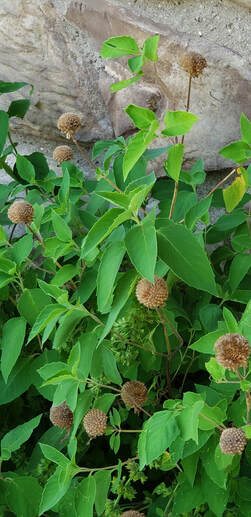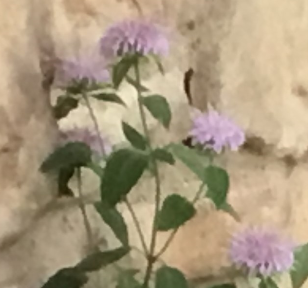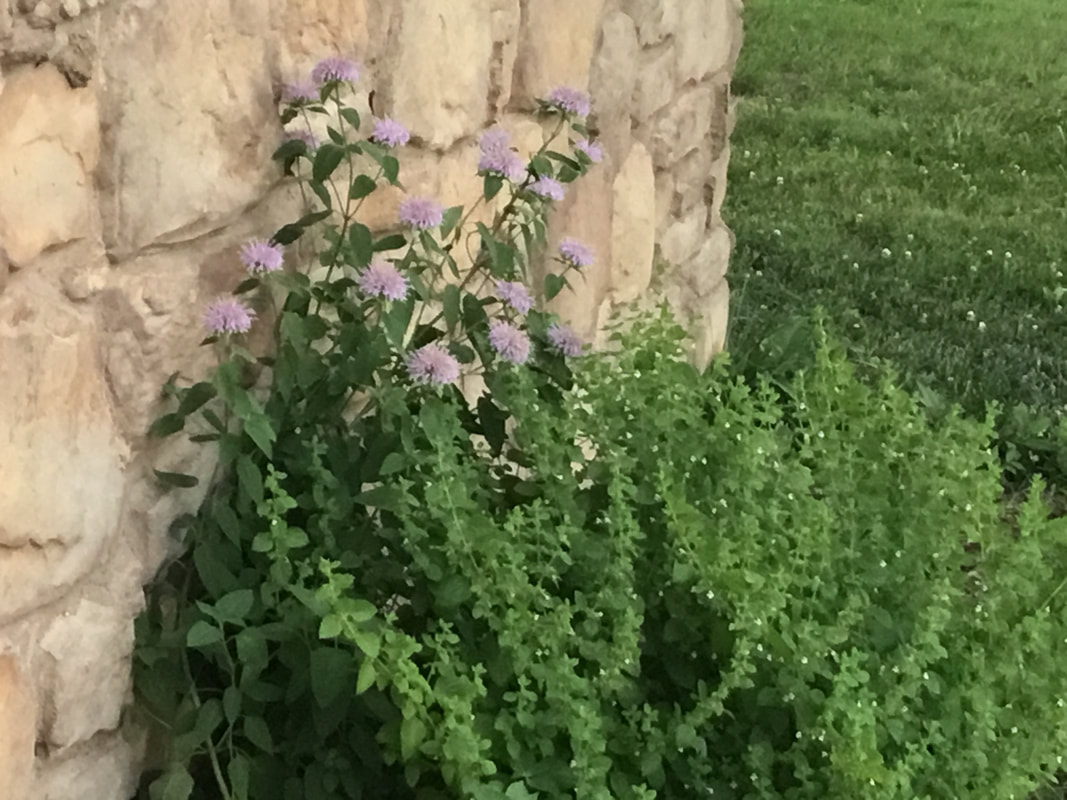|
If you're looking for a plant that you can grow even if you have a 'black thumb' (like me), Bee Balm makes a great choice. This hardy perennial will attract bees, butterflies, and hummingbirds, yet may repel deer. (Hmm, I wonder if it would keep critters from feasting on your vegetable garden if it were planted around the perimeter.) More importantly, Bee Balm features some great therapeutic benefits which can be accessed year round using the leaves and/or flowers. Like Oregano and Thyme, Bee Balm has a significant amount of a chemical called Thymol. This constituent gives it a spicy-hot taste. (I picked a leaf off my plant last summer and chewed on it - my mouth was burning, then went a little bit numb.) It's aroma is lemony-mint which is not a surprise since it's a member of the mint family. The flowers come in different colors - red, purple, white, and pink. In the pictures above and below, you can see my Bee Balm is purple. My one mistake in planting was that I put it too close to my Lemon Balm. (They started as such little plants!) If you decide to plant Bee Balm, you need to leave about 2 - 4 feet of space on each side. The picture below shows my Bee Balm and Lemon Balm. I planted them about 18 inches apart in 2019 with the Bee Balm on the left of the Lemon Balm. The Bee Balm grew towards and behind the Lemon Balm, and the Lemon Balm just grew in every direction. Both plants still look happy and healthy, but I'll try to move them this Spring.  Left: What my Bee Balm looked like a couple of weeks ago. Zone 8b, North Central Texas. The leaves have now dried up. We have mild winters here, and I let the flowers go to seed in the hopes I'll get more plants. Come Spring, I'll try my hand at dividing the roots and planting in other areas too. So, what's so great about this plant?
It's analgesic, antimicrobial, antioxidant, anxiolytic, decongestant, digestive, hypotensive, a relaxing nervine, tonic, and vulnerary. Energetically, it's warming, drying, and diffusive. If you have a minor infection on the skin, in the mouth or throat, or a yeast infection, The thymol and carvacrol in Bee Balm may help clear it up. (Remember, more serious infections need a doctor's care.) Both those constituents also provide relief from stings, skin conditions like eczema, burns, or wounds. A spit poultice (made by chewing a leaf then applying it to the skin) is an easy way to soothe bites, scrapes, or minor wounds while stopping bleeding and keeping bacteria at bay - especially if you're out camping and forgot to bring a first-aid kit. Infusing the dried herb in a fixed oil, then making a salve with that oil is an easy way to keep such relief on hand. Did you ever get a toothache on a weekend when you can't see a dentist? Lightly chewing a Bee Balm Leaf then applying it to the gums around the irritated tooth is a natural way to minimize the pain until you can get in to see the dentist. If you only have dried herb, you could steep a teaspoon of leaves in boiling water for 5 - 15 minutes, allow to cool, then use it as a mouth rinse. (You might also include oregano and cloves when making the tea/mouthwash.) Colds, flu, stuffy sinuses? Make a tea with the herb. You can use it as a steam to inhale and drink the tea to open up your airways. The tea can help dry out congested mucus membranes and reduce inflammation in your nasal passages. Drinking Bee Balm tea before bed may help you relax, destress, and fall asleep naturally. The tea is also good when you have an upset stomach because it calms gas, bloating, indigestion, and nausea. Finally, as a diffusive, Bee Balm will warm you up. Those with chronically cold hands and feet can drink the tea or add the fresh herb to their food for flavor. They will soon discover that it spreads the warmth from the core of the body outward to the extremities. The main caution with Bee Balm is for those who are pregnant or breastfeeding because it is an emmenagogue and can cause contractions, they should avoid this herb. Do not use Bee Balm if you are allergic to it. Sources: Texts:
0 Comments
Leave a Reply. |
DisclaimerThe information contained in this blog is for educational purposes only and has not been evaluated by the Food and Drug Administration. Archives
March 2021
Categories |


 RSS Feed
RSS Feed